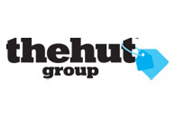Total sales for the month of April increased by 7.3 per cent compared to the same period in 2019, according to the latest British Retail Consortium (BRC) research.
The spike in sales was above the three-month average growth of 6 per cent.
In the three weeks following the reopening of stores, non-food sales increased by approximately 25 per cent in comparison to the levels of spending seen during the previous month under lockdown.
In April, UK retail sales increased 46 per cent on a like-for-like basis compared to the same month in 2019, when sales grew 3.7 per cent from the preceding year.
But online sales played a far greater role in like-for-like sales, which increased the growth rate significantly.
Over the three months to April, total in-Store sales of non-food items declined 30.9 per cent and increased 1.6 per cent on a Like-for-Like basis.
This is worse than the 2019 total average decline of 3.1 per cent.
Across the three months to April, food sales increased 9.9 per cent on a like-for-Like basis and 10.3 per cent on a total basis. This is higher than the 2019 Total average growth of 1.4 per cent per cent
For the month of April, food was in growth year-on-year.
During the same period non-food retail sales increased by 25.1 per cent on a like-for-like basis and 2.4 per cent on a total basis. This is above the 2019 total average decline of 1.3 per cent.
For the month of April, non-food was in growth year-on-year.
“With the short-term pent-up demand for the shopping experience drawing consumers back to stores, non-food sales across stores and online increased by a quarter between March and April,” said Helen Dickinson, chief executive, BRC. “It is great to see customers feeling confident visiting shops, a testament to the ongoing investment by retailers in making their stores, warehouses, and deliveries Covid-secure.”
The chief exec said that many fashion retailers saw an uptick in sales and furniture also saw a boost.
“However, this sales growth is fragile,” Dickinson warned. “There is little competition for share of spending while parts of hospitality, leisure, and tourism remain restricted and inner cities and town centres continue to perform poorly as many people continue to work from home.”
She said that while the boost in sales is positive, High Streets still “have a long way to go on the path to recovery,” with over 530,000 retail employees remaining on furlough.
“April was a landmark month for food and drink retailers as non-essential retail reopened from the middle of the month and the out-of-home sector started to re-emerge,” said Susan Barratt, chief executive, Institute of Grocery Distribution (IGD.) “However, the year-on-year impact for supermarkets is hard to determine due to the different timings of Easter, but the week-on-week data indicates food and drink sales slowed from mid-April, although some momentum was regained towards the end of the month.”
Barratt predicts that food and drink will settle at a reduced rate of growth as the competitive landscape normalises, but also as the tough lockdown comparatives from 2020 persist for the next few months.
Beyond Channels: Redefining retail with Unified Commerce
This Retail Systems fireside chat with Nikki Baird, Vice President, Strategy & Product at Aptos will explore how unified commerce strategies enable retailers to tear down these barriers and unlock new levels of operational agility and customer satisfaction.
The future of self-checkout: Building a system that works for consumers and retailers
In this webinar, industry leaders discussed what the future of self-checkout looks like and how retailers can make the technology work for everyone.
© 2024 Perspective Publishing Privacy & Cookies










Recent Stories